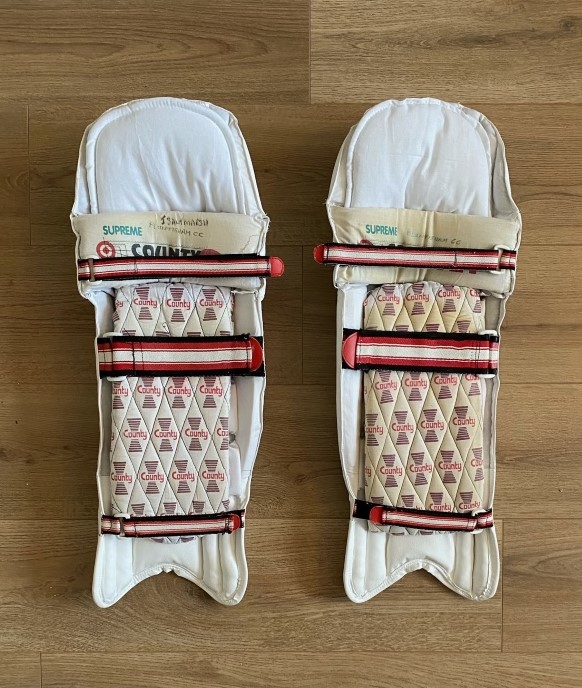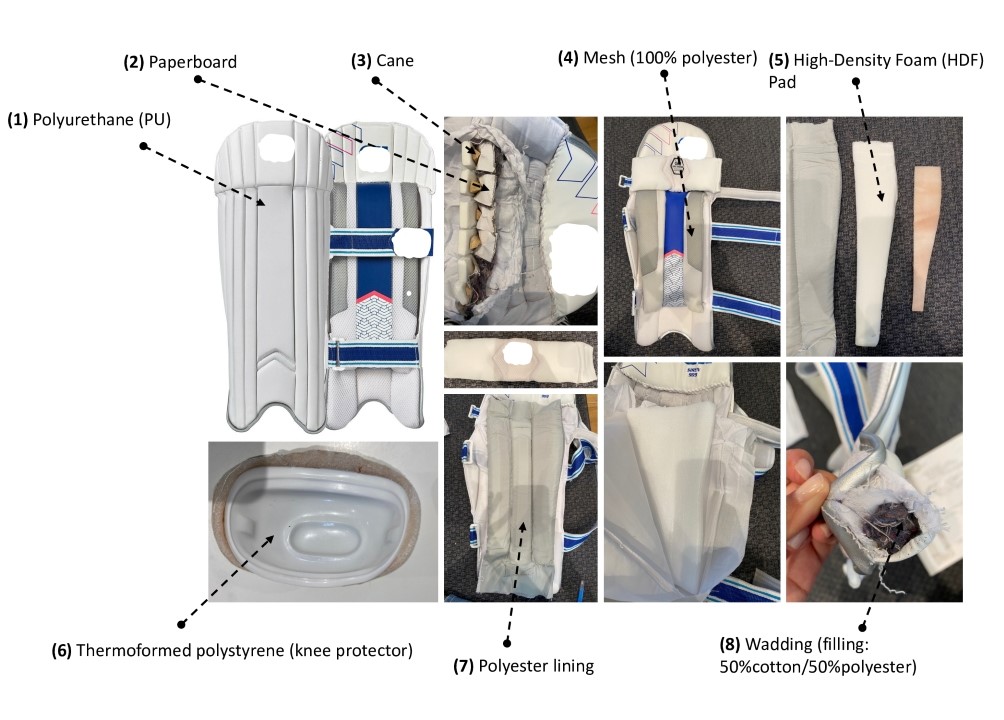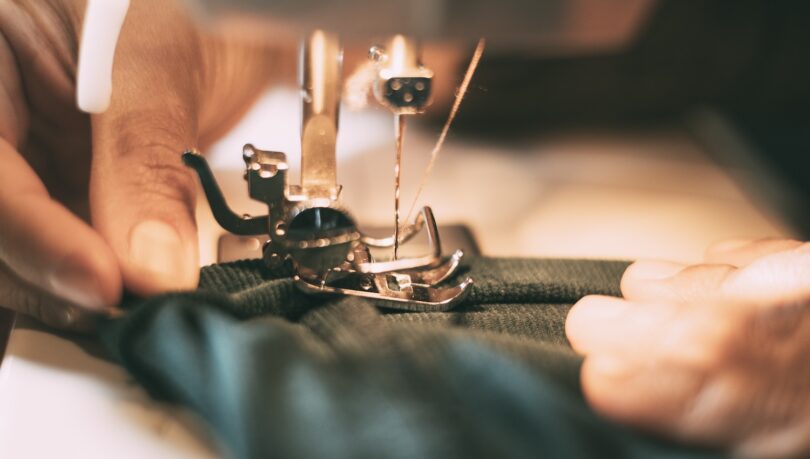Polyplastics Launches DURACIRCLE™ Sustainability Initiative for Recycling of Engineering PlasticsRecreational cricketers in England and Wales show high levels of interest in gear that’s been repaired or refurbished, or made from vegan leathers. These are among key findings of a survey carried out by The Centre for Sustainable Design (CfSD) at University for the Creative Arts (UCA).
The research covered four phases, with phase one as a pilot running in August 2023, involving a small cohort of 42 players, and phases two, three and four involving a larger tranche of respondents numbering 1604 in total, between January and July 2024.
Phase one was carried out in-house by CfSD, phases two, three and four by a market research company. Phase one questioned predominantly male players, whereas phases two, three and four were close to an average 70-30 gender split.
The surveys sought to increase understanding of cricket players’ perspectives on sustainability, and reuse and repair of cricket gear. It covered topics related to product failures and lifecycle considerations for batting pads and gloves, and attitudes towards plant based vegan leathers and repair and refurbishment services.

Significant interest
Eighty seven percent of the phases two and three respondents “indicated a significant interest in repair and refurbished – R&R – of cricket gear, and interest in kit made from plant based vegan leathers ”, says CfSD Director and former club cricketer Professor Martin Charter, who designed the survey with CfSD’s Dr Lilian Sanchez-Moreno.
“That high level of interest warrants further investigation, and further qualitative research will be carried out via focus groups,” Charter adds.
The findings also indicate that, if given sufficient knowledge and/or online training on how to repair or refurbish cricket gear is provided, 84% of players would seek to repair/refurbish rather than replace with new gear. Fifty one percent of phase two respondents indicated they would prefer to access video-based online training, compared to 29% opting for printed materials.
While the survey as a whole highlighted a high interest in R&R services, some 10% of respondents in the third survey “raised concerns about the durability and quality of repaired and/or refurbished gear,” Charter points out.
Advancements in Circular Cricket Gear and Circular Cricket projects
The second survey was completed as part of CfSD’s “Advancements in Circular Cricket Gear (ACGG)” project that ran from August 2023 to July 2024 and explored biomaterials and circular design of cricket gear. ACCG is funded by UKRI via University for the Creative Arts, AHRC Impact Acceleration Account (IAA).
The third and fourth phases were part of the Circular Cricket project funded by the Arts and Humanities Research Council’s Design Accelerator (DA) programme. DA is part of Future Observatory, the Design Museum’s national research programme for the green transition.
Survey results published in full
The survey’s results have been published by CfSD in full in two parts. The first, “Cricket & Sustainability Findings from Online Survey Recreational Cricket Players in England & Wales, April 2024” is based on phase two of the survey, which built on phase one. The results are at https://cfsd.org.uk/wp-content/uploads/2024/04/Cricket-Sustainability-Findings-from-Online-Survey-April-2024.pdf
The second set of results includes the most recent data on phase three’s 507 and phase four’s 507 respondents and will be published in September 2024
The findings and demographics from the phase four include…
Sustainability considerations appear to be high for consumer/player purchasing decision making in relation to performance and quality. With 62% of a 507 sample indicating that they would consider sustainable cricket gear alternatives if they matched performance and 24% indicating to always seek sustainable options despite higher purchasing costs.
High levels of self-repair practices among cricket players. 75% have engaged in self repair of cricket gear. With 32% for cricket bats, 18% for batting pads, 15% for batting gloves and 11% for cricket clothing.
Lack of awareness
“Perhaps the key finding from all four surveys was the lack of awareness and understanding of environmental issues associated with the manufacture of cricket gear among recreational cricketers,” says Charter.
“For example, 58% of phase one respondents said they had not considered the environmental impact of cricket gear – batting pads, batting gloves and balls. And some 70% said they were unaware of any organisation or programme available to reduce the amount of waste generated in the cricket gear sector.”
The survey also asked players how long they kept their gear for. Almost half (49% from the 1097 respondents in phases one, two and three) replied that they kept their batting pads for two to three seasons, with the same percentage keeping their batting gloves for the same period.
The findings show relatively short use of batting pads which was a surprising finding. However, in phase one of the survey with the smaller sample of older players indicated, “more than eight seasons” for batting pads was the reply given by 57% of respondents.

Self repair
One question in phase two, which comprised 548 players, explored the potential interest in self-repair of cricket gear, including, for example, the provision of online tutorials for players to mend their cricket gear. Thirty nine per cent of respondents indicated they have at least a basic level of sewing experience, followed by 27% at intermediate level and 25% with no experience. Self-repair was explored further in phase four, indicating that 75% of 507 respondents, indicated that they had engaged in cricket gear self-repair activities. While this was expected for cricket bats, figures on self-repair for batting pads and gloves were higher than expected.
“These findings are interesting,” says Charter, “because it was anticipated that the majority of respondents, primarily male, would have a zero to basic level of experience in sewing.”
When asked to indicate the greatest barriers to the reuse, repair and refurbishment of cricket batting pads and gloves, the survey showed:
- The main barrier appears to be the potential stigma associated with the use of reused or refurbished cricket gear and hygiene considerations, particularly for batting gloves and cost and availability related considerations.
- Concerns were also highlighted in relation to the practicality of repair for the average recreational player (e.g. identifying a local repairer, dropping off repairs, postage costs associated with repair services, waiting times, etc) and the cost effectiveness of repair versus purchasing new cricket gear.
Demographic breakdowns
The demographic breakdown of respondents in phases two, three and four was 70% identifying as male and 30% respondents as female from a total of a 1609 sample. In these phases, three quarters of respondents were under age 45 years).
In sharp contrast to phase one, only twenty-four per cent of respondents were in the category of over 45-year olds. “The respondents of the phases two and three, by age and sex, do appear to be reasonably representative of the cricket playing population, compared to the first survey which was based on a much smaller sample where respondents were biased towards older, male players,” says Charter.
Surprising
“The finding that such a large percentage of respondents in all four surveys showed a willingness to purchase and use gear made of plant-based vegan leather was perhaps surprising, given the traditional nature of the sport and the large percentage of respondents being male,” he adds. “We were similarly surprised at the high level of interest shown in of R&R of kit.”
Will R&R and vegan cricket gear be taken up this season or next by players?
“I have no doubt there will be less waste of cricket gear – provided that affordable more reuse, repair, and refurbishment services and schemes are made available,” Charter emphasises.
“As for plant-based vegan leather cricket gear, watch this space.”







